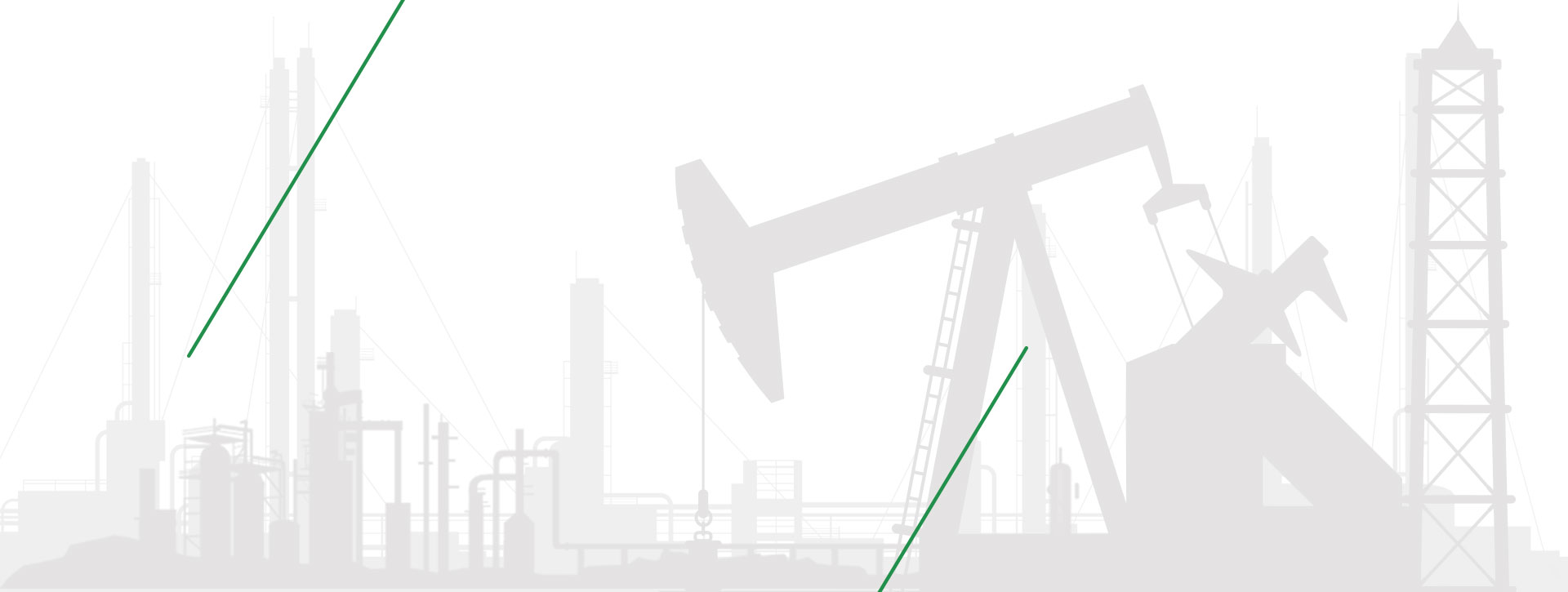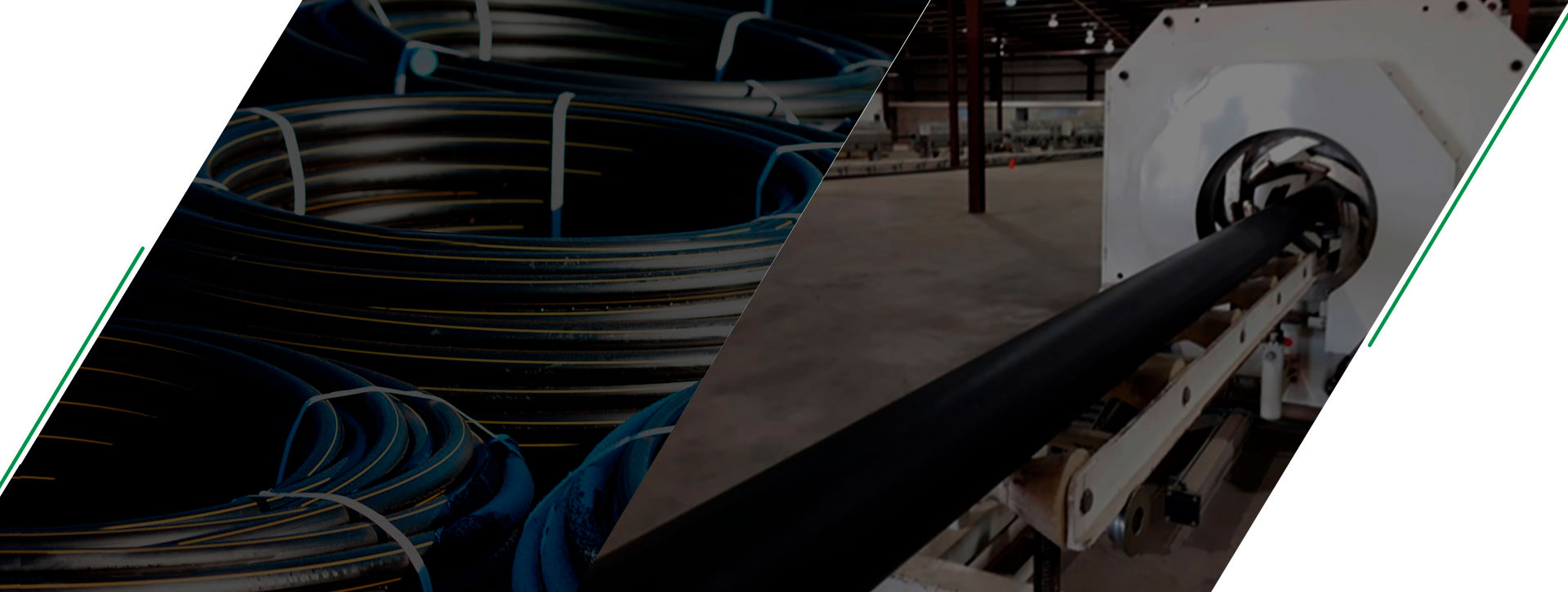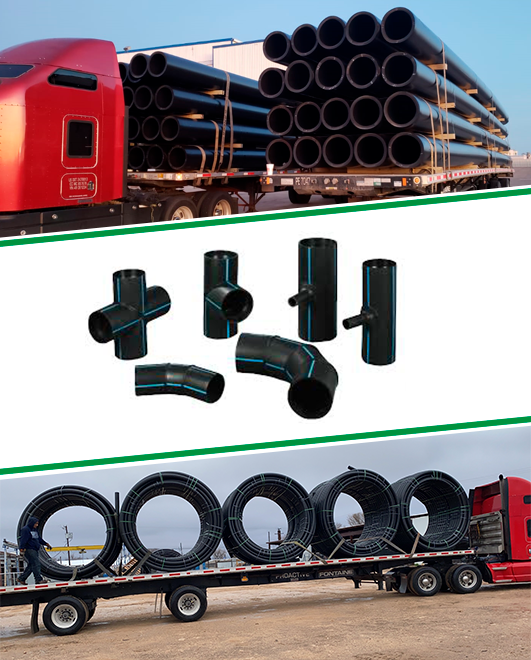
About Us
Revincabrings 50 years
of HDPE pipe manufacturing experience (www.revinca.com) with products of proven quality based on the use of certified raw material.
The PE 4710 / PE-100 is the latest generation bimodal high-density polyethylene which exhibits superior toughness and resistance in aggressive applications. It can be used for the transportation of pressure water and gas, water sewer systems, electrical conduit, and all oil and gas application when we have crude oil, natural gas, produced water and for the installation of fracking and saltwater disposal networks.
This pipe is ideal for underground and above ground applications having a high resistance to corrosion, chemicals, temperatures and UV degradation.
We are focused on special applications with new piping or to solve problems in old existing systems with installation, replacement and repair by the trenchless method using Horizontal Directional Drilling, Bursting, and Sliding Lining processes.
WHAT WE DO
We Promise Premium Products and Services
Using Plastics Pipe Institute (PPI) listed PE 4710 / PE-100 raw material made in the USA to meet the most demanding applications in Water, Gas Distribution, Mining, Wastewater, Landfill, Industrial, Energy, and Conduit for Electrical systems.
This raw material is stress rated for pressure pipe with an HDB rating of 1600 psi at 73°F and 1000psi at 140°F.
Revinca’s products exceed the requirements of the applicable quality standards of ASTM D 2513, ASTM F 2619, ASTM D 3035, ASTM F714, AWWA C901, AWWA C906 and API 15LE for the IPS Standard sizes from 1 to 24 inch.
At the same time, we offer with the requirements of ISO 4427 and ISO 4437 sizes from 25 to 630 mm.
All are currently offering DR7, DR9, DR11, and DR 17.
We can use client owned metal pipe reels as well for the conduit.
Our pipe is black or black with stripes in colors according for the service identification.
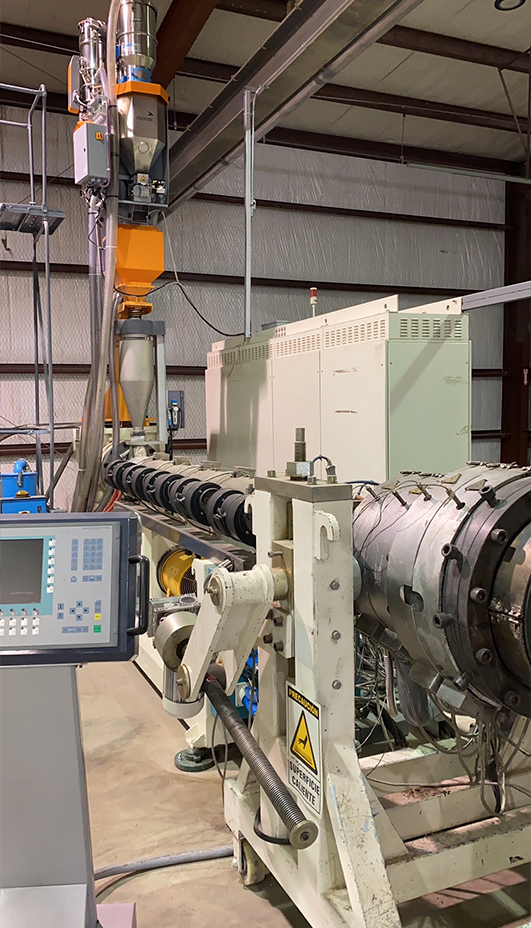
Revinca’s HDPE Pipe
Potable Water, Gas Distribution, Fresh Water, Irrigation, Waste Water, Chemical lines, Chiller Water Lines, Slurry Lines, Drainage Lines, Corrosive Fluid Lines, Loop and Protection Fire, Lines, Sewer Lines, River Crossing, Conduit Electrical Lines
- Excellent resistance to environmental and stress cracking, and to crack propagation. Excellent UV weather resistance for surface installations.
- High impact strength, toughness and fatigue resistance. Smooth interior surface for high flow/low friction.
- Outstanding corrosion and chemical resistance, Light Weight.
- Abrasion Resistence for mining applications.
- Cost-effective solution for Trenchless Pipe Remplacement Systems. Easy joined by fusion.
- Cost-effective installation using lightweight equipment.
- Use Only PE 4710 raw material listed by Plastic Pipe Institute (PPI).
- The UV Protection with 2.2 % Carbon Black.
- In rolls for small diameters up 4 inch/110mm.
- FromJoint in 40 and 50 feet from 3 inch/90mm to 24inch/630mm.
- The material used for Potable Water shall be approved by NSF.
- Product description permanent print.
- Color Stripe Printed:
• Blue = Water.
• Yellow = Gas.
• Red = Conduit.
• Green = Sewer Drain.
• Purple = Reclaim Water.
Standard outside diameter sizing systems
Select your IPS or ISO size and weight chart and print it by selecting double-side printing
IPS Inch System
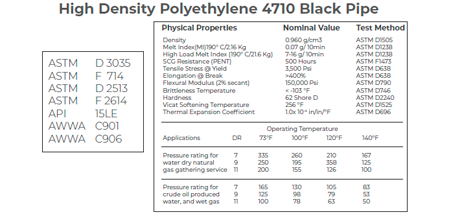
ISO Metric System
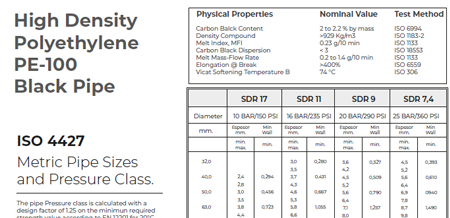
PE 4710 (PE-100)
The PE-4710 is the latest generation of high density polyethylene specially formulated to be used in flexible pressure pipes improving tensile strength, rigidity, and chemical resistance
Its development in North America was from obtaining an improved high-performance HDPE that far exceeded the already common application of PE-100 (superior to PE 3408-3608) in pressure pipe systems, improving its performance over time to ensure that the slow Crack Grow failure did not occur before 50 years of life.
This would prove the veracity of the study that defended from the first moment the application of HDPE in the manufacture of pressure pipes guaranteeing a minimum life of 50 years.
Initially and with the development of HDPE pipes (PE 3408-3608 / PE-63 / PE-80 / PE-100), no good results were obtained in some cases with pressure applications, because failures with breaks due to slow crack propagation before 50 years. While real physical tests require time, extrapolation simulating these failures in less time has allowed for the design of equipment that today are used continuously to achieve improvements in raw materials and manufacturing processes.
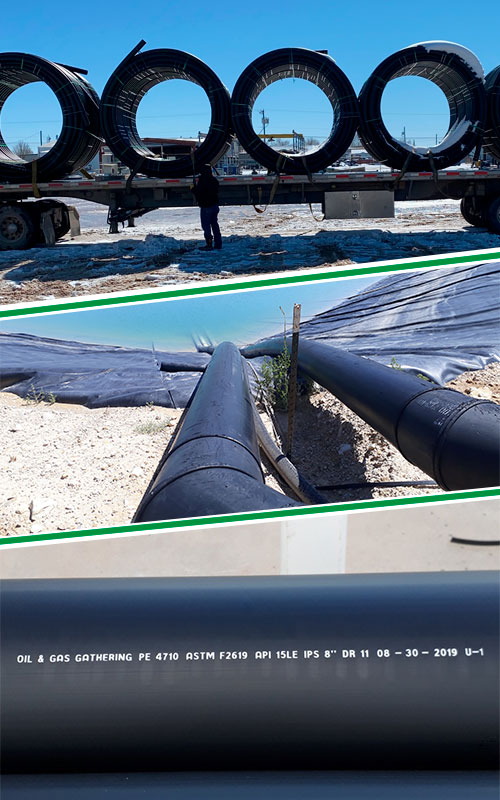
The PE 4710, which is a Bimodal, is the result of this development offering superior levels of short-and long-term performance when compared to other HDPE pipe raw conventional materials.
It is obtained by a petrochemical process with two reactors compared to the previous monoreactor systems.
For PolyPipe systems where it is manufactured under European regulations, ISO standards and with the use of PE-100, the PE 4710 is the substitute that improves the application by meeting higher levels in all the required tests.
It is not easy to make a comparison between different types of raw materials when applied for the manufacture of pressure pipes, and less so when the use
of these may be covered by standards from different regions or countries.
This can create confusion and erroneous selection decisions based on project requirements. To do this, you must follow the regulations of the country and the technical specifications that are required. A common mistake is to request a pipe for its diameter and pressure. The diameter is the most important but this is followed by the thickness given by the SDR or DR and thus determines the nominal pressure for which it is designed. This pressure is calculated under normal conditions of installation and use so if you have higher temperatures, or if the pipe will not be buried, or the fluids will contain acid levels should be over-designed varying the safety factor that is only under the responsibility of the project developer.
Below is a chart showing the resulting nominal pressure difference for HDPE pipes applying different standards and raw materials:
| Standard | Raw Material | (Psi) DR 7 | (Psi) DR 11 | (Psi) DR 17 |
|---|---|---|---|---|
| ASTM | PE 3408/ 3608 | 267 | 160 | 100 |
| ASTM | PE 4710 | 335 | 200 | 250 |
| ISO | PE 100 | 370 | 235 | 150 |
With this comparison in the chart one could, at a glance, understand that the PE-100 is superior because it allows higher values of nominal pressure. The reality is not so, and this is due to the variations between standards where the difference in the hydrostatic calculation method, the design temperature, and the safety factor benefit the PE-100. Actually performing a comparison under equal conditions the PE 4710 would result somewhat superior in its pressure behavior with an improvement in rigidity and abrasion resistance.
We can conclude that the current best option for the American Market is the use of PE 4710 regardless of whether its application is under ASTM or ISO standards depending only on the user and the country where this project is to be executed.
ContactUs!
Please fill out the request for information form below

